Ah...we like Hoppers as there is one in Marylebone we have been to a few times.
Hoppers emailed they are introducing a dream burger. Will try.
Ah...we like Hoppers as there is one in Marylebone we have been to a few times.
Let us know what you think!Hoppers emailed they are introducing a dream burger. Will try.
I never said anything about the products sound in my post, only that it is clearly from objective data not time coherent. Do we both agree that time coherence means that all frequencies produced by the speaker should arrive at the ear at the same time? If yes, then there is no way to interpret the data otherwise than Wilsons are not time coherent. That doesn’t (necessarily) make them bad but it is a fact.
Take a look at Thiel and Vandersteen plots...the height one measures (and listens) matters to the step function response. On the right height the drivers all move essentially together (ie in phase) and based on the slopes and distances the waves reach the microphone in a nice tight packet. Wilson’s are in mixed polarity and phase shifted such that group delays make it impossible for mechanical alignment.
Again, I haven’t denigrated the brands sound but they are making dubious claims about time alignment...mechanical alignment of the driver distances to the ear is only half the story...the rest is electrical phase and group delay and this is where the measurements show it isn’t right.
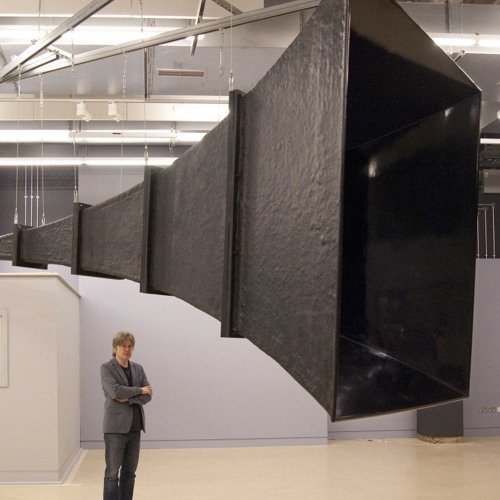
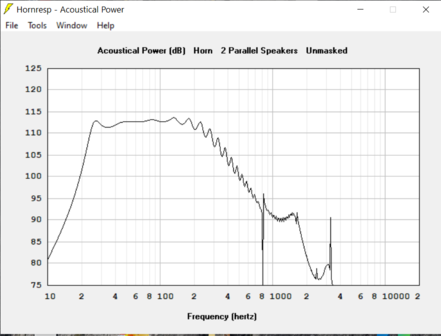
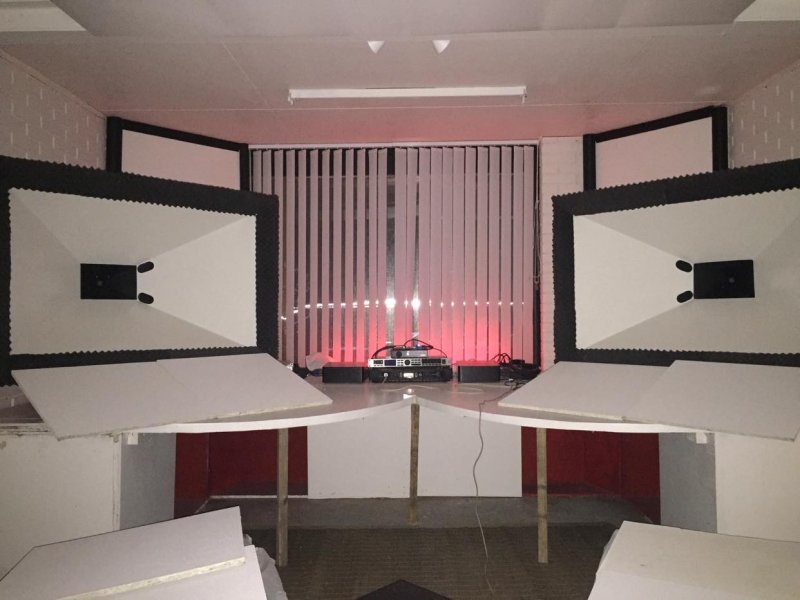
Are you using a digital crossover? Is that how you are compensating for the long path length differences between drivers?A little late to the party.
True mathematical bass horns will be very big as you all know and will be an option to almost nobody. Imagine having this at home and you need 2 for stereo
View attachment 88279
True mathematical bass horns has extreme efficiency around 115-120 dB/1w. Efficiency is what you sacrifice as you move towards 1/2 and 1/4 wavelength horns.
Wrong expansion rates, wrong loading of the driver will further compromise the efficiency and frequency response. If the horn mouth is to small it will cause ripples in the frequency response.
The so called infamous horn honk that many associate with horn speakers, is often caused by using the horn outside it`s bandpass (cutoff frequency) often in combination with 1 or more of the above mentioned problems.
With todays simulation programs (Hornresp is a nice one) the wild guessing and endless trials and errors can easily be omitted and a bulls eye can be haved in one go.
Horns are pure physics at work, no magic is involved (as in all other aspects of hifi). They work as an acoustic impedance transformer, to better transfer the signal energy from the driver, to the air in the horn throat (beginning at the horn). This high pressure/low amplitude sound wave at the throat, moves down towards the horn mouth and is transformed to a low pressure/high amplitude sound wave.
For bass frequencies one can use the room corners to expand the horn length and mouth size. This gives the option of reducing the actual horn size dramatically, without to much compromise in efficiency and FR. Klipsch Cornerhorn is a good example. I use this little neat trick in my own horn system.
The simulated response from one of my bass horn
View attachment 88280
One bass horn is comprised of 2 x 500 liter FLH each with 15" drivers. They are laid in an 90 degree angle with the horn mouth touching each other. Coupling horn mouths together will give a better loading and tune the horns lower. A coupling top plate is mounted, which will increase total horn size.
View attachment 88281
With well implemented horns, you can have your cake and eat it too.
Cheers
Schlager, I am very aware of this BIIIIIIIIG horn! It's the Denman Exponential, and I was totally wowed by it at the London Science Museum, some 8 to 9 years ago. However, despite its size, it didn't generate tremendous levels of bass.A little late to the party.
True mathematical bass horns will be very big as you all know and will be an option to almost nobody. Imagine having this at home and you need 2 for stereo
View attachment 88279
True mathematical bass horns has extreme efficiency around 115-120 dB/1w. Efficiency is what you sacrifice as you move towards 1/2 and 1/4 wavelength horns.
Wrong expansion rates, wrong loading of the driver will further compromise the efficiency and frequency response. If the horn mouth is to small it will cause ripples in the frequency response.
The so called infamous horn honk that many associate with horn speakers, is often caused by using the horn outside it`s bandpass (cutoff frequency) often in combination with 1 or more of the above mentioned problems.
With todays simulation programs (Hornresp is a nice one) the wild guessing and endless trials and errors can easily be omitted and a bulls eye can be haved in one go.
Horns are pure physics at work, no magic is involved (as in all other aspects of hifi). They work as an acoustic impedance transformer, to better transfer the signal energy from the driver, to the air in the horn throat (beginning at the horn). This high pressure/low amplitude sound wave at the throat, moves down towards the horn mouth and is transformed to a low pressure/high amplitude sound wave.
For bass frequencies one can use the room corners to expand the horn length and mouth size. This gives the option of reducing the actual horn size dramatically, without to much compromise in efficiency and FR. Klipsch Cornerhorn is a good example. I use this little neat trick in my own horn system.
The simulated response from one of my bass horn
View attachment 88280
One bass horn is comprised of 2 x 500 liter FLH each with 15" drivers. They are laid in an 90 degree angle with the horn mouth touching each other. Coupling horn mouths together will give a better loading and tune the horns lower. A coupling top plate is mounted, which will increase total horn size.
View attachment 88281
With well implemented horns, you can have your cake and eat it too.
Cheers
Yes 4 way active with multi subs, behind listening position (LP) are 1 FLH 500 liter horn sub to the left and right.Are you using a digital crossover? Is that how you are compensating for the long path length differences between drivers?
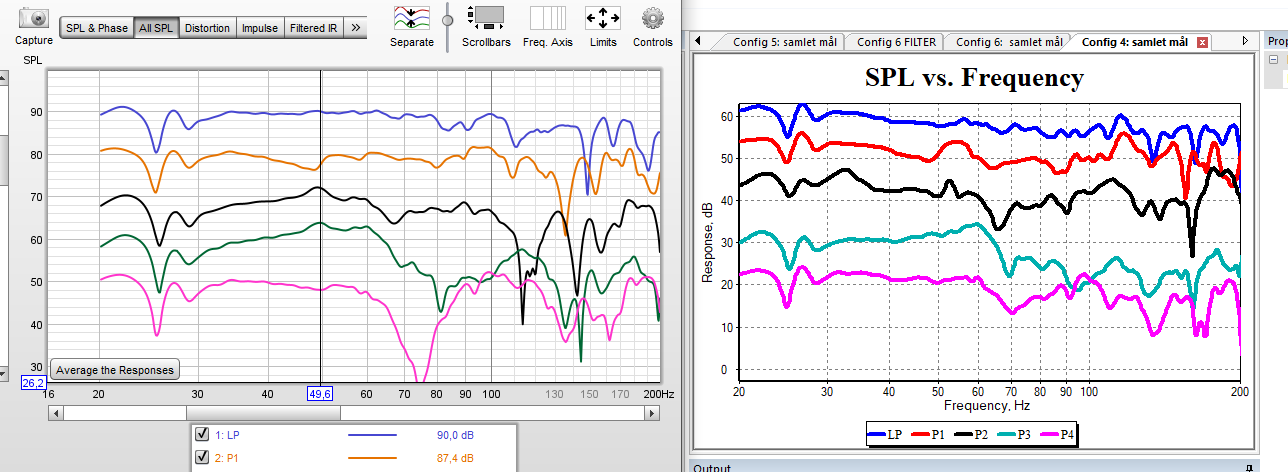
Well with the right driver and back loaded properly, it certainly should produce tremendous bass. Some horns even use compression drivers down to the 20´s hz, though they are very expensive and have low x-max.Schlager, I am very aware of this BIIIIIIIIG horn! It's the Denman Exponential, and I was totally wowed by it at the London Science Museum, some 8 to 9 years ago. However, despite its size, it didn't generate tremendous levels of bass.
First of all, your horn amazing work and very well explained.Well with the right driver and back loaded properly, it certainly should produce tremendous bass. Some horns even use compression drivers down to the 20´s hz, though they are very expensive and have low x-max.
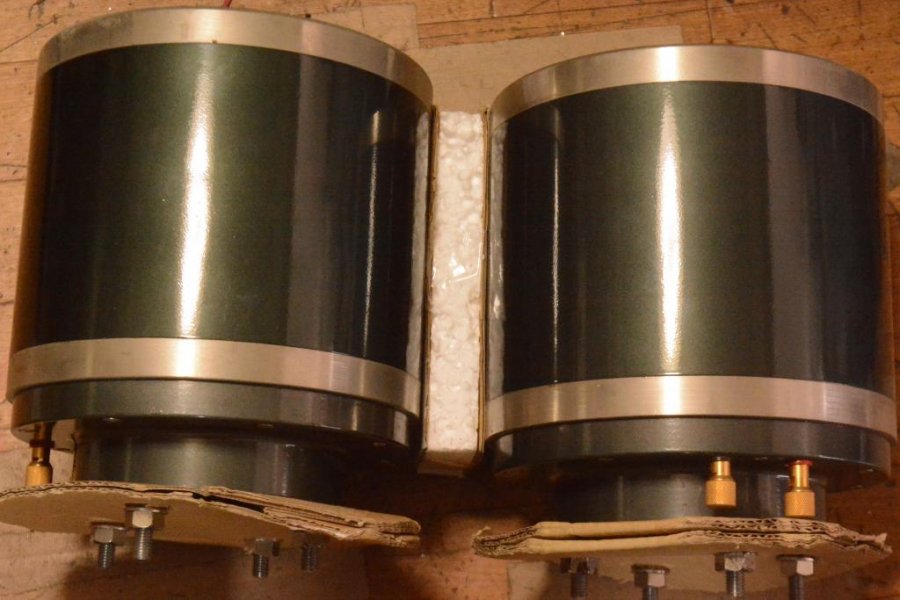
I never heard in real a horn driver below 80hz, the yl have 5.5 inch diaphragma max 60 Watt 16ohm with 104db/1watt. You need get really loud to be blow it up. I think it a fast bass( no mass) that you can't get with normal woofer.Dasguteohr, would be interestingly to hear such drivers on a bass horn. Does it give a different bass? quite surely, is it better? perhaps. I´m more concerned with the typically low x-max on such drivers. Imminent danger for blowing up, ouch!
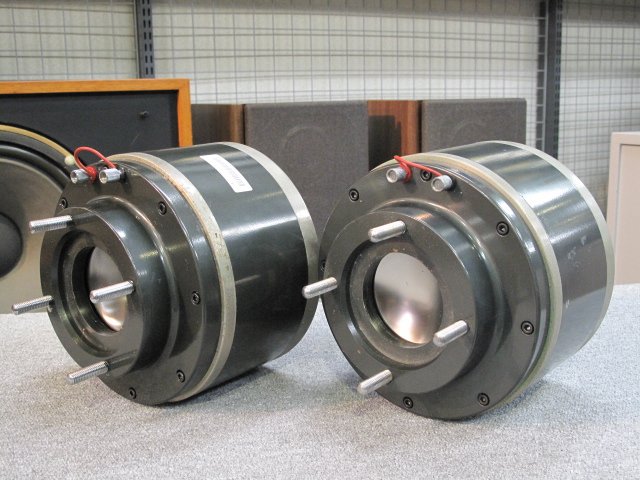
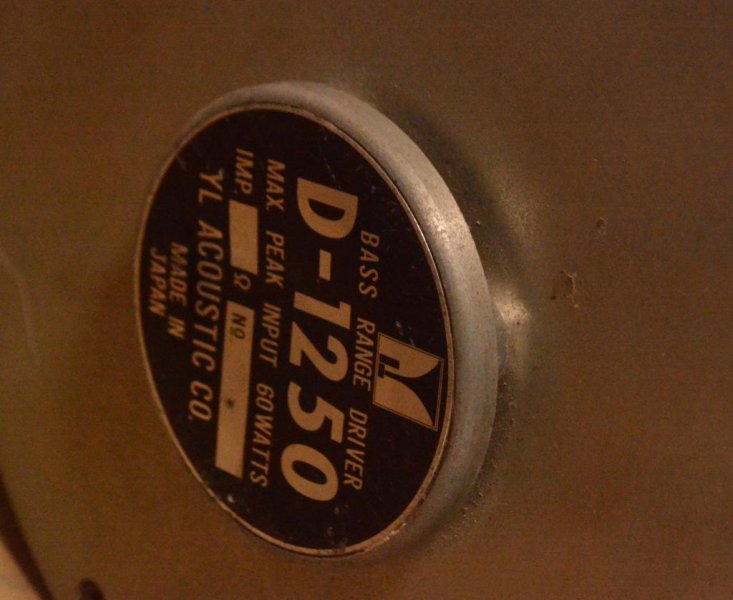
I don´t understand that term "fast bass". The driver will swing accordingly to the frequency it is fed. A small 5,5" diaphragm will have to swing a lot more than say a 15" driver, for the same amplitude, so that don´t hold up. What perhaps will give a different tonal character, could be things like distortion, mechanical noise, beside that I don´t believe that there will be much sonic difference, as long as the driver/horn combo is played within it´s bandpass and kept below severe distortion and dynamic and thermal compression. In the bass it is mainly about in room FR and integration with the mains/midrange
Horns brings mainly superior SPL, dynamic and transient capabilities to the table.
If I understand you correctly, I would actually turn this the other way around. It is an even bass FR and well integrated with the mains or midrange, that allows you to hear the quality of the main speakers. For example if you have a 8 db peak at 100 hz, due to room problems (or bad speaker design), it will severely mask the surrounding frequencies and it will tilt the spectral balance, giving the sound a muffled feeling.Schlager, I am enjoying your recent posts about bass horns. I have vintage corner horns which perhaps go down into the low 30s. I have always thought that a significant part of the bass quality I hear is the result of the rest of the system driving these particular speakers. Could you comment on the role the rest of the system might also play in presenting good natural sounding deep bass from these horn speakers?
Hi schlager,I don´t understand that term "fast bass". The driver will swing accordingly to the frequency it is fed. A small 5,5" diaphragm will have to swing a lot more than say a 15" driver, for the same amplitude, so that don´t hold up. What perhaps will give a different tonal character, could be things like distortion, mechanical noise, beside that I don´t believe that there will be much sonic difference, as long as the driver/horn combo is played within it´s bandpass and kept below severe distortion and dynamic and thermal compression. In the bass it is mainly about in room FR and integration with the mains/midrange
Horns brings mainly superior SPL, dynamic and transient capabilities to the table.
Let´s go the other way and call some bass for "slow bass". That would mainly resort to and uneven FR under 100 hz. Peaks with +10 db will severely compromise the feeling of "fast bass". Suchs peaks is due to a build up of resonances, due to mostly room modes. This resonance will persist for 0.3 - 1.5 seconds like ringing bass (long decay). When the resonance/ringning stops, the rest of the music has moved forward, seemingly leaving the bass behind in time. Masking is another "troublemaker". Luckily we can apply simple eq, to reduce the peak and ultimately the resonance and ringing . That would give faster bass. Again bass integration to the mains is crucial. Even bass frequency response (FR) (dips are not so severe as peaks), good integration with mains, powerful amp, good room, will give the perception of fast bass.Hi schlager,
I‘ve always understand speed to refer to ‘slew rate’….the ability of a woofer to change from one instantaneous value (frequency/amplitude) to another. Think of reproducing a square wave….the flatter and less tilted the straight line portion of the wave appears, the faster the woofer.
IME, problems with integration of subwoofers arise when the rise times of subwoofer and main speaker are substantially different. I believe it may be one reason why its easier to integrate a subwoofer with a full range speaker vs a monitor with more limited bass.
I had a pair of Sonus Faber Guarneris where subwoofer integration was a real issue
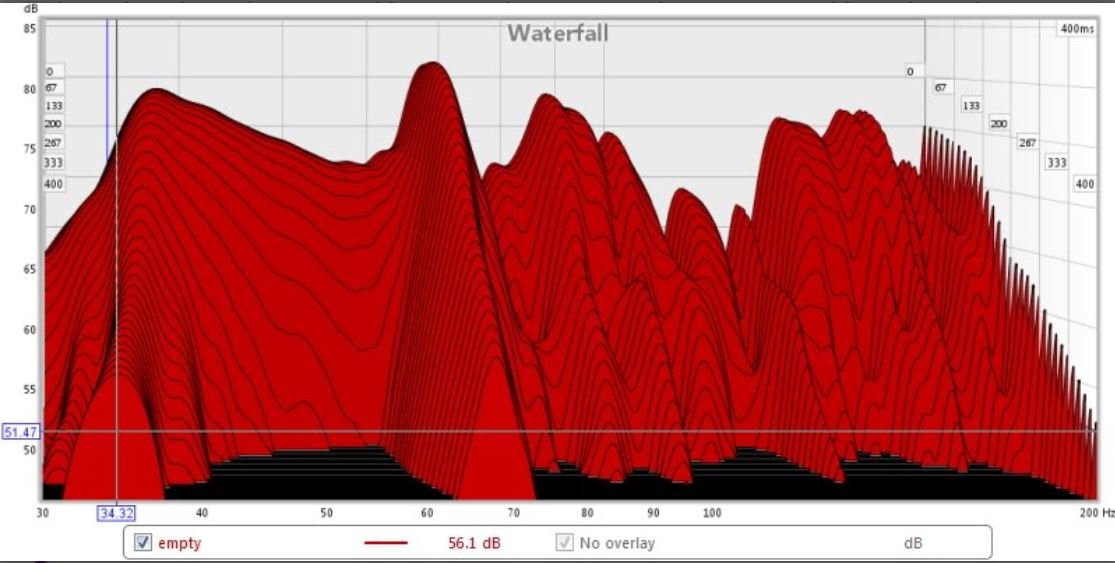
| Steve Williams Site Founder | Site Owner | Administrator | Ron Resnick Site Owner | Administrator | Julian (The Fixer) Website Build | Marketing Managersing |

